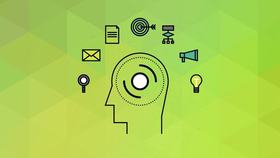Free Video Content
Tools, techniques, and strategies that you can use to make better decisions.
|
Decision Making and Generative AI: Benefits and Limitations
What is generative AI, how can it be used for decision making, to accelerate learning, and what are some current limitations? |
|
|
Goal-Oriented Decision Making: The APE Model
The APE model explores how we experience goal-oriented decision making. This includes the role of motivation and the experience of decision making in terms of how we assess, plan, and execute. The model also discusses how experience influences the use of intuition and deliberation. |
|
|
Naturalistic Decision Making: Accelerated Expertise
Discussing the difference between explicit and tacit knowledge, this video offers five suggestions for helping to accelerate your expertise. Based on research from educational psychology and naturalistic decision making, the video discusses guided exploration, using hypotheticals, case studies, simulations, and decision games. |
|
|
Wicked Problems: A Naturalistic Approach
Wicked problems have no solutions and require a different approach than tame problems. While tame problems can be addressed using rational or scientific models, this is not the case for wicked problems. To better respond, research from naturalistic decision making is used to propose a naturalistic approach. |
|
|
4-Phases for Achieving Goals: A Mindset Theory
Adapted from the works of Peter Gollwitzer, the video discusses the natural stages required to achieve a goal as well as the need to shift between the mindsets of deliberation and implementation. |
|
|
Careers in Decision-Making
This video discusses career opportunities in decision-making and the benefits of joining the Naturalistic Decision Making Association (NDMA) |
|
|
Creating Tactical Decision Games: A 5-Minute Overview
Learn how to create and play tactical decision games. And to learn more download a free copy of "Mastering Tactics" by John Schmitt. |
|
|
SMART Goals: "How to" in 60 Seconds
A basic model for using the SMART model to set your goals. This video covers the concept in just over 1-minute. |
|
|
Intuitive Decision Making: The RPD Model in 60 seconds
A brief description of intuitive decision making using the recognition primed decision model (RPD). Developed by studying firefighters and chess players, the RPD model describes the role of experience in quickly recognizing a good course of action. Intuition also allows us to recognize when something is wrong, helping us to seek out more information. |
|
|
The OODA Loop: A Competitive Decision-Making Tool
Originally developed by Officer John Boyd for air combat, the OODA Loop is a competitive decision-making model that has been applied in business, sports, the military, and emergency management. |
|
|
The RPD Model: An Intro to Recognition Primed Decision Making
The recognition primed decision model or RPD model describes how people make decisions under real world conditions like time pressure and vague goals. Developed from the field of naturalistic decision making, the RPD model is often used to help increase performance and accelerate expertise. |
|
|
How Planning to Fail Leads To Success: The Basics of Using a Premortem
A five-step process, the "PreMortem" is a cognitive tool developed by research psychologist Dr. Gary Klein. Using the tool helps to reduce errors created by overconfidence. |
|
|
SMART Goals - A Quick Overview
When setting or evaluating goals, consider using the acronym SMART. Using SMART provides structure that helps ensure goals are specific, measurable, achievable, relevant and time bound. |
|
|
Reducing the Dunning-Kruger Effect
A form of cognitive bias that leads to incorrectly estimating one's performance, this video discusses several ways to reduce the Dunning-Kruger Effect. |
|
|
A Modern Trolley Problem
As autonomous vehicles become a reality, how will they be programmed? How will your car resolve an ethical dilemma? This modern version of the trolley problem, brings to life some thought provoking questions about human nature and ethics. |
|
|
The Planning Fallacy: How to Hit Your Deadlines
Have you ever wondered why some things on your to-do-list are never finished on time? One reason is a psychological concept known as "The Planning Fallacy". |
|
|
How to Conduct a SWOT Analysis
One tool to help identify goals that are a good strategic fit for you or you organization is a SWOT analysis. Using SWOT allows you to make strategic decisions based on your strengths and weaknesses as well as any opportunities or threats. |
|
|
How to Use the 4 D's to Manage Your To-Do-List
A method for organizing tasks, this video discusses four options for dealing with your To-Do-List. |
|
|
Increase Your Likability: The Mere Exposure Effect
Also known as the familiarity principle, this short video discusses the science behind the mere exposure effect as well as provides 5 tips to increase your likability. Tip #2 is my favorite. |
|
|
Social Reciprocity: The Science of Giving
In psychology, social reciprocity or the theory of reciprocity discusses how the act of giving can influence someone to respond. The video discusses reciprocity bias using the classic coca-cola experiment along with application. |
|
|
5-Steps to Create and Sustain Motivational Change
A scientific approach to motivational change, this short video provides a 5-step model as a motivational tool for creating and sustaining change. While there are any number of motivational techniques available on the Internet, few are backed by evidence-based research. |
|
|
How Ice Cream Kills! Understanding Correlation vs. Causation
To make better decisions and improve your problem solving skills it is important to understand the difference between correlation and causation. |
|
|
The Need to Innovate: Maslow's Hierarchy of Needs
What drives us to innovate? What motivates us to come up with new ideas? This video takes a quick look at Maslow's Hierarchy of needs as it relates to innovation and the science of motivation. |
|
|
Understanding Psychological Anchors
A form of cognitive bias, the anchoring effect can effect our judgment. We can use anchoring to our benefit and we can try to be aware when anchors might be influencing our decisions. |
|
|
How to Solve a Problem in Four Steps - The I.D.E.A. Model
A highly sought after skill, learn a simple yet effective four step problem solving process using the concept IDEA to identify the problem, develop solutions, execute a plan and then assess your results. |
|
|
Three ways to gain more insights
Based on the work of Dr. Gary Klein, gain insights by understanding contradictions, connections and creative desperation. |
|
|
Using the Eisenhower Matrix
The Eisenhower Matrix is a decision-making model focused on time management. The method was supposedly used by former President Dwight D. Eisenhower. This video discusses how the model can be applied along with limits. |
|


